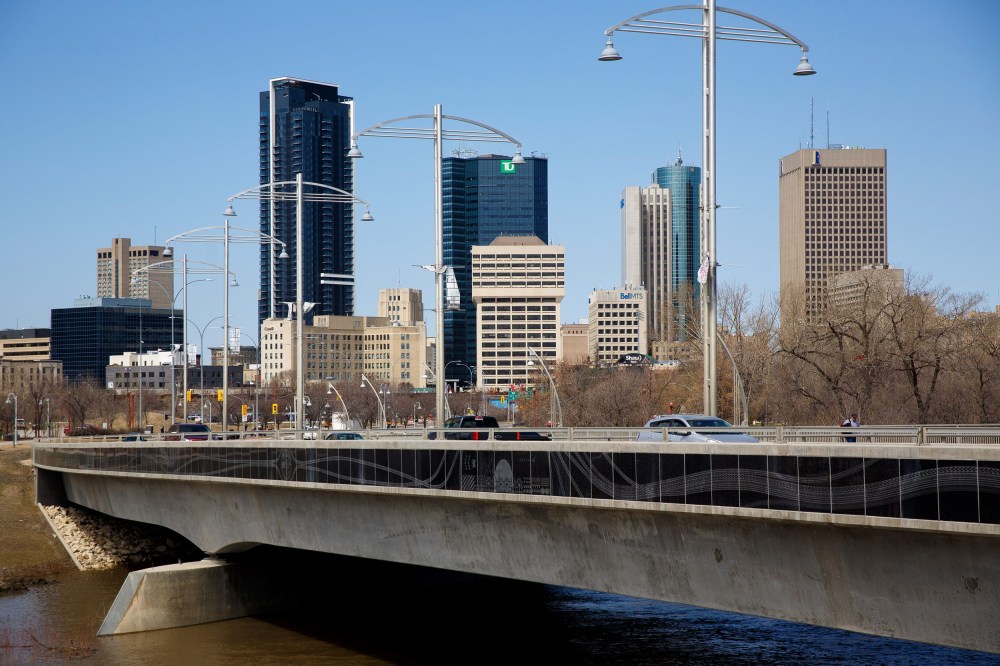Joint government funds needed to address inner-city poverty, addictions crises, report says
Advertisement
Read this article for free:
or
Already have an account? Log in here »
To continue reading, please subscribe:
Monthly Digital Subscription
$0 for the first 4 weeks*
- Enjoy unlimited reading on winnipegfreepress.com
- Read the E-Edition, our digital replica newspaper
- Access News Break, our award-winning app
- Play interactive puzzles
*No charge for 4 weeks then price increases to the regular rate of $19.00 plus GST every four weeks. Offer available to new and qualified returning subscribers only. Cancel any time.
Monthly Digital Subscription
$4.75/week*
- Enjoy unlimited reading on winnipegfreepress.com
- Read the E-Edition, our digital replica newspaper
- Access News Break, our award-winning app
- Play interactive puzzles
*Billed as $19 plus GST every four weeks. Cancel any time.
To continue reading, please subscribe:
Add Free Press access to your Brandon Sun subscription for only an additional
$1 for the first 4 weeks*
*Your next subscription payment will increase by $1.00 and you will be charged $16.99 plus GST for four weeks. After four weeks, your payment will increase to $23.99 plus GST every four weeks.
Read unlimited articles for free today:
or
Already have an account? Log in here »
Hey there, time traveller!
This article was published 11/06/2024 (548 days ago), so information in it may no longer be current.
Days after a city report recommended the three levels of government create a new Core-Area Initiative to rejuvenate downtown, a group of inner-city leaders is calling on them to fund a similar initiative to help with the poverty and addictions crises.
The 40-page report, called Visioning a Just Transformation in Winnipeg’s Inner City, was authored by the Canadian Centre for Policy Alternatives Manitoba, a left-leaning advocacy group.
The report calls on the City of Winnipeg, and the provincial and federal governments, to renew investments in “equitable social and economic development” to address the lack of housing, as well as food insecurity and the toxic drug crisis.

The CCPA centres its annual reports around a different theme each year. This year, it explored how attempts to bring in funding and initiatives to revive the inner city after the pandemic have served, or haven’t served, the people living in the community.
Aiming to just recover from the effects of the COVID-19 pandemic is “not good enough” to fill the gaps in need in the city’s core, said Sarah Cooper, the report’s lead author and an assistant professor in city planning at the University of Manitoba.
“We can’t go back to the way things were before the pandemic, because it wasn’t a good situation before the pandemic,” she said Tuesday. “So how can the inner city have not just a recovery, but a transformation?”
The report also calls on a panel of Indigenous and community leaders to be convened to identify the strategies and structures needed for public investment to address the problems plaguing the inner city.
For the area’s support services, those problems have only become more apparent in recent years.
“Here I am, still, having spent my entire working life in this community, only to see it get worse,” said Susan Berthiaume of the North End Women’s Centre.
On Monday, 58 people walked through the facility’s doors, Berthiaume said. Its drop-in centre seats 10 people.
Inner-city funding from all levels of government needs to be focused on the needs of the people, she said, noting that Manitoba hit a record 56 drug-related deaths in a single month in January.
“Our bathrooms, our benches, our tables have all become safe consumption sites. Our community workers have all become EMTs. Our services, our facilities have all been retrofitted to help people not die on our watch,” she said.
“Housing, social-policy deficits are so extreme right now that people are stuck in a circle, where housing, consumption, treatment and mental-health services are all so misaligned that I don’t know that one funding strategies is a cure-all.”
The city announced more details about CentrePlan 2050 last week. The plan calls for residential development to be kick-started by removing some development fees, the transformation of surface parking lots into residential towers, a revamp of the Graham Avenue bus mall and the addition of parks and green spaces.
One of its recommendations is for the civil service to explore whether the three governments can join together for a Core-Area Initiative-type of agreement to help pay for the features in CentrePlan 2050. The CAI agreements of the 1980s prompted the construction of Portage Place and the housing behind it, as well as the creation of The Forks.
The inner-city report was released at Circle of Life Thunderbird House on Main Street Tuesday morning.
kevin.rollason@freepress.mb.ca
malak.abas@freepress.mb.ca
Visioning a Just Transformation in Winnipeg’s Inner City

Kevin Rollason is a general assignment reporter at the Free Press. He graduated from Western University with a Masters of Journalism in 1985 and worked at the Winnipeg Sun until 1988, when he joined the Free Press. He has served as the Free Press’s city hall and law courts reporter and has won several awards, including a National Newspaper Award. Read more about Kevin.
Every piece of reporting Kevin produces is reviewed by an editing team before it is posted online or published in print — part of the Free Press‘s tradition, since 1872, of producing reliable independent journalism. Read more about Free Press’s history and mandate, and learn how our newsroom operates.
Our newsroom depends on a growing audience of readers to power our journalism. If you are not a paid reader, please consider becoming a subscriber.
Our newsroom depends on its audience of readers to power our journalism. Thank you for your support.
History
Updated on Tuesday, June 11, 2024 11:08 AM CDT: Adds PDF of report
Updated on Tuesday, June 11, 2024 6:20 PM CDT: Copy edited and updated








